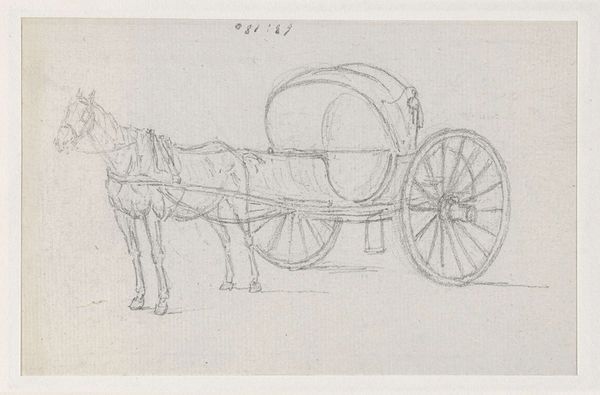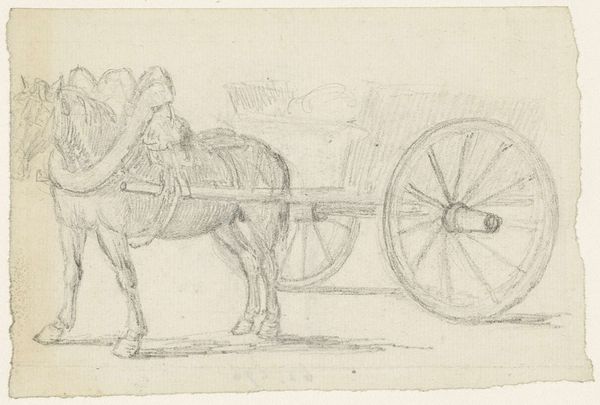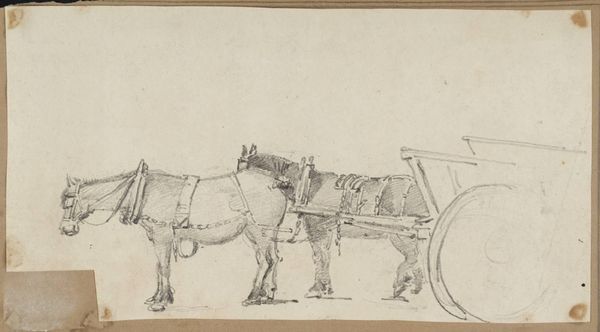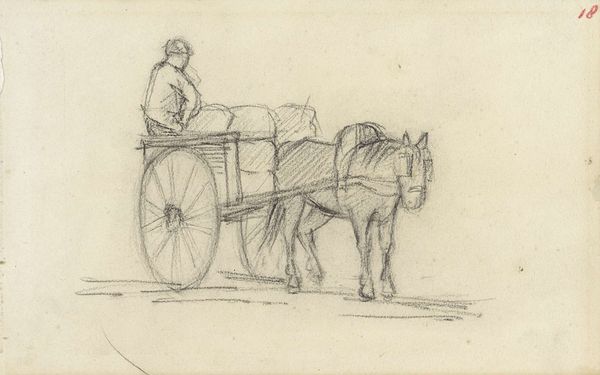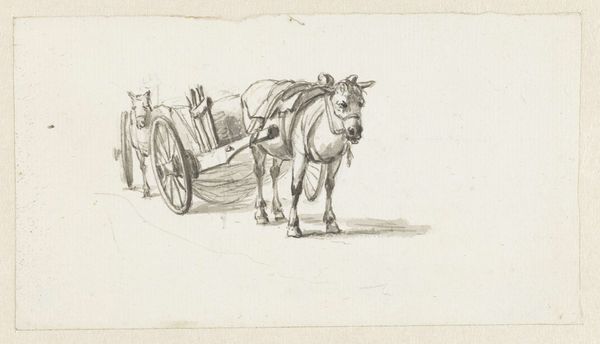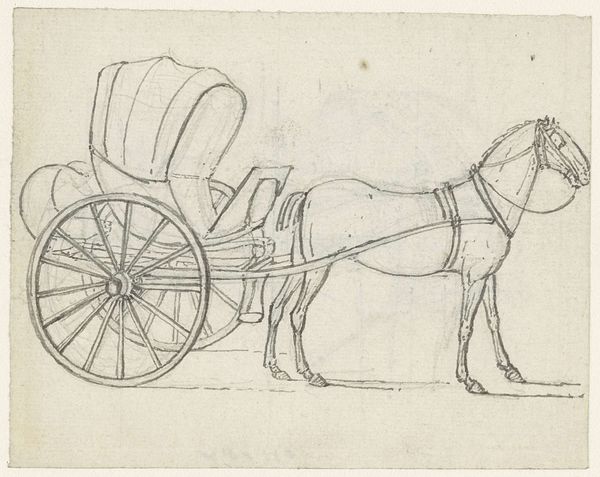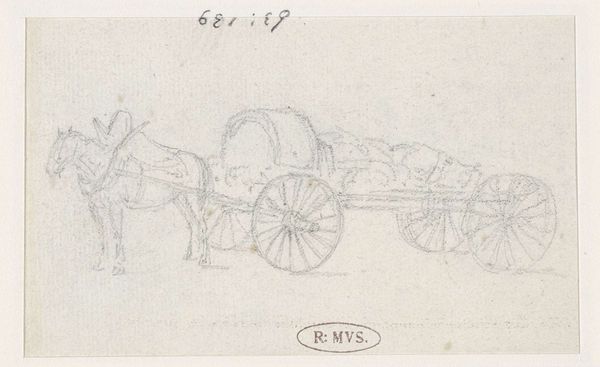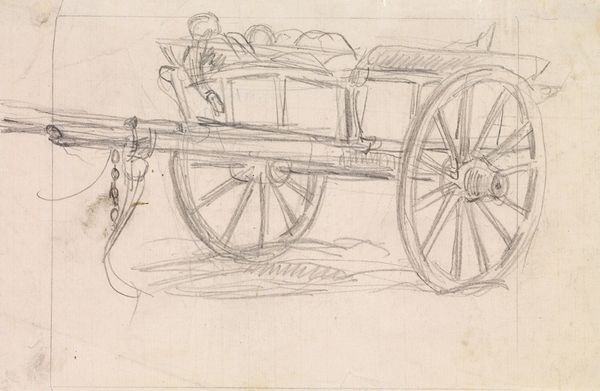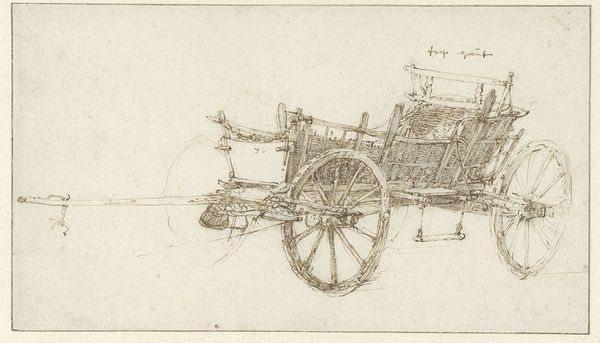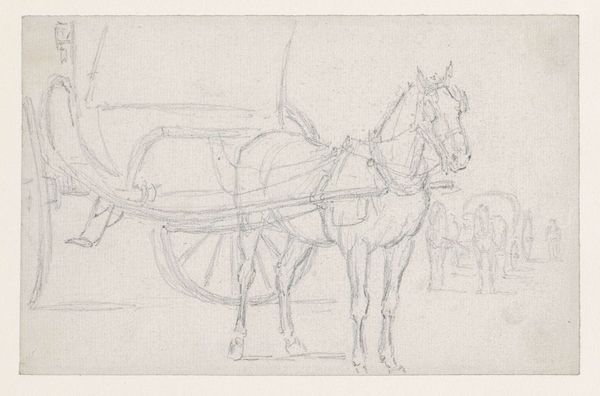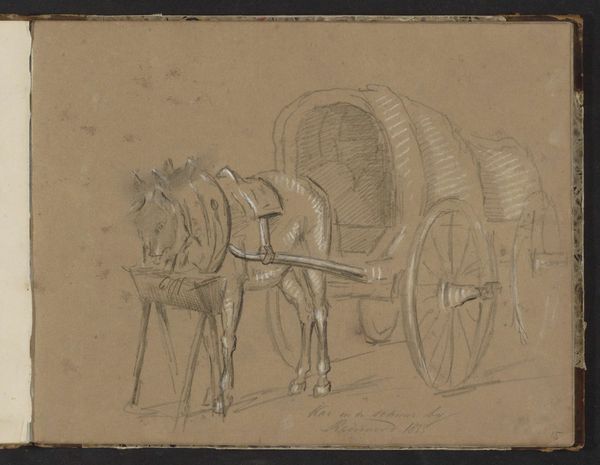
drawing, pencil
#
drawing
#
pen sketch
#
pencil sketch
#
landscape
#
pencil
#
realism
Dimensions: height 100 mm, width 155 mm
Copyright: Rijks Museum: Open Domain
Curator: Georges Michel created this pencil drawing, "Wagentje met koetsier naar links," sometime between 1773 and 1843. It’s a study of a horse-drawn carriage, seemingly captured with quick, gestural lines. What's your first take? Editor: There’s a definite sense of movement. Even though it’s static, I can feel the anticipation, the almost-start of a journey, which also feels incredibly exclusive to me. Horse-drawn carriages were not exactly vehicles of the working class. Curator: Exactly! Michel lived through a period of immense social upheaval. Think about the French Revolution; it wasn't just about monarchs and nobles losing power. It involved huge shifts in wealth distribution. So, looking at something like this carriage drawing, we can consider it as part of the visual language representing a very specific class, the aristocracy, in a tumultuous time. Editor: How much did Michel engage directly with those social and political changes through his work, though? It seems, compositionally, that it is such a simple portrayal that is absent of a narrative other than to suggest power and wealth. It almost normalizes the inequity as a quick visual record. Curator: It is difficult to be definitive, given the nature of drawings that seem intended for something else, but consider how the French aristocracy and Parisian Salon exhibited idealized, grand-scale portrayals. His is more observational, and even fleeting. Look at the hurried quality, and how unfinished the details are— almost as if he needed to quickly record what he saw. This offers insight, even unconsciously, into this time in history as its values shifted. Editor: I agree, it lacks polish. The wheels are roughly sketched, but so much attention is given to the harness, that is very revealing of who has value. What are we meant to admire? If it is the vehicle, then where are the details, is it to draw focus on the horse who does the labour? I also see commentary in the fact that he leaves negative space as opposed to drawing a wealthy passenger. Perhaps, it asks us to consider, who is missing from the carriage and society itself. Curator: That's a good reading, considering the larger questions of that period. I’m struck now by how his landscapes reflected the shifting landscapes around him, too, not just aesthetically, but also how they captured social change. Editor: It feels a bit like a Rorschach test, open to how different audiences at different times perceive its incomplete nature, asking what story we bring to the page and what history are we writing.
Comments
No comments
Be the first to comment and join the conversation on the ultimate creative platform.
